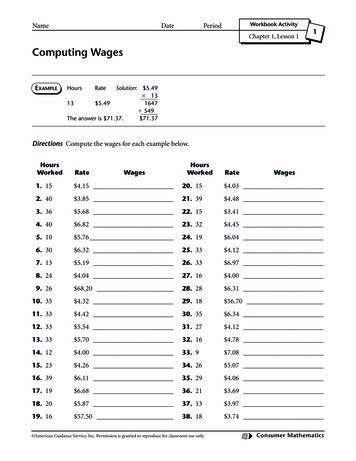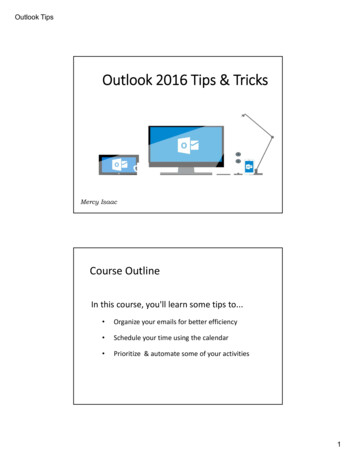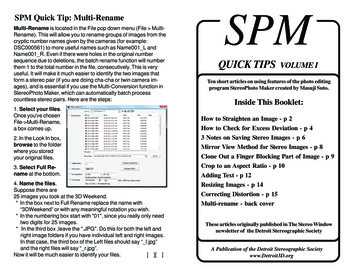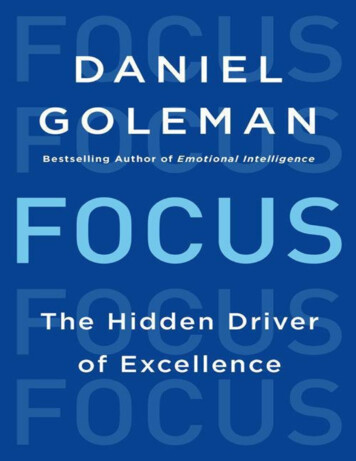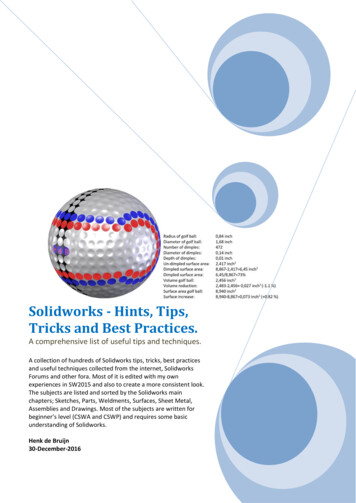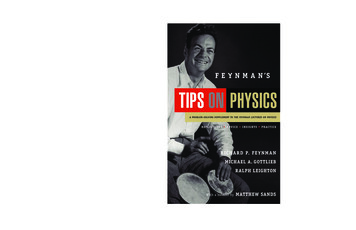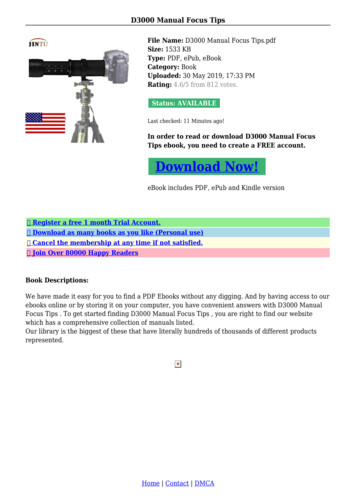
Transcription
D3000 Manual Focus TipsFile Name: D3000 Manual Focus Tips.pdfSize: 1533 KBType: PDF, ePub, eBookCategory: BookUploaded: 30 May 2019, 17:33 PMRating: 4.6/5 from 812 votes.Status: AVAILABLELast checked: 11 Minutes ago!In order to read or download D3000 Manual FocusTips ebook, you need to create a FREE account.Download Now!eBook includes PDF, ePub and Kindle version Register a free 1 month Trial Account. Download as many books as you like (Personal use) Cancel the membership at any time if not satisfied. Join Over 80000 Happy ReadersBook Descriptions:We have made it easy for you to find a PDF Ebooks without any digging. And by having access to ourebooks online or by storing it on your computer, you have convenient answers with D3000 ManualFocus Tips . To get started finding D3000 Manual Focus Tips , you are right to find our websitewhich has a comprehensive collection of manuals listed.Our library is the biggest of these that have literally hundreds of thousands of different productsrepresented.Home Contact DMCA
Book Descriptions:D3000 Manual Focus TipsUsing these links to get yours is what helps me keep working on this site for free. Thanks! Ken. Seealso my Guide to Nikon AF Settings for other cameras. I shoot in the P mode, which allows all thesesettings. See my plainEnglish D3000 Users Guide for more than youll ever need to know about thevarious exposure modes on the top dial, as well as every other aspect of the D3000. For this page,use the P, S, A or M modes and youll have access to all these settings. Most traditional screwtype AFlenses from 1986 through today will not autofocus on the D3000.Many nonNikon lenses fromTamron, Tokina, Quantaray, Sigma and anyone other than Nikon still wont autofocus on the D3000.Try before you buy, but honestly, there isnt much the included 1855mm VR lens wont do. You haveto hold the shutter down halfway as you compose the first shot so the AF system can focus and lock,and then the camera fires instantaneously when you press the shutter the rest of the way. SeePreventing Shutter Delay for more. Its the round thing that surrounds the OK button. Press it left,right, up or down to select a sensor, which will highlight in the finder. If there are any exteriorcontrols, they are on the lens. Turn the focus ring on the lens and look for the focus confirmation dotin the finder. M means manual all the time. Most D3000 users dont use these controls, but everyonewould have to pay for them if Nikon included them. Otherwise, everyone would have to pay formechanical controls, even if they didnt use them. If its holding still, the D3000 locks the focus. If thesubject is moving, the D3000 tracks it as it moves nearer and farther. The AFA mode is that good!Use this for sports and vehicles in motion, like cars, birds and aircraft. This is an old mode; 3D belowdoes the same thing but even better. Set this mode when handing your D3000 to a stranger. Iusually use this mode for everything. Ditto for birds in flight and most other things ora-manual.xmlnikon d3000 manual focus tutorial, d3000 manual focus tips, d3000 manual focus tips2017, d3000 manual focus tips 2016, d3000 manual focus tips for beginners, d3000manual focus tips free.
This lets the D3000 figure out where to focus, and it works great. In AUTO, the D3000 locks intoAFA and, if you havent changed it yourself, sets the AF Area Mode to Closest Subject. I prefer to usethe menus. Its great people like you who allow me to keep adding to this site fulltime. Thanks. Itcosts you nothing and is a huge help. These places have the best prices and service, which is why Iveused them since before this website existed. I recommend them all personally. Use with PermissionIstucked between 35 and. Whats your shutter count. It is the product of a good camera or a goodphotographer It will be because of an excellent came. How does it work and how do you. What pricerange should I be. I also have come upon my grandfathers collection of old nikoncompatible lenses.They all take great pictures I have a 15200mm Tamron and a Sigma 109mm f2.8 that im LOVING,however Im having some trouble keeping things in focus when I take the picture. I know that atripod and a remote would solve my problems keeping my camera steady, but I would really rathernot dive into the tripod world until Im ready to tackle some long exposure shots. Does anyone haveany tips on how I should hold my camera to keep it in focus. Everything looks great through theviewfinder but for some reason my pictures arent coming out very sharp. Thanks so much!!First,take a look at the dioptre and make sure its set for your eye. You can set it by sliding the switch onthe right of your viewfinder up and down a few notches its a little hidden behind the eyecup. Onceyouve moved it a notch, take a picture. Focus better Keep going till its accurate. Secondly, there is alittle green dot that appears in the bottom left of your viewfinder when the camera thinks the imageis in focus. In good light its a great guide but serious low light can confuse it. You can also turn onthe rangefinder in your t/userfiles/bsp-agents-manual.xml
When shooting in an assisted mode it will guide you via left and right arrows if you are short or longin your focus these arrows are usually used for exposure and will revert to exposure when in fullmanual which is annoying. As far as your grip goes left palm up, lens in palm, index and thumb torotate focus. The weight of the camera should be in your left hand. Keep your elbows in I dig my leftelbow into my upper stomach and roll the upper knuckle of you right index finger over the shutterrelease dont push it down, as youll move the whole camera with it. If there is anything nearby thatyou can use to lean against lean against it e.g. shoulder to the wall, elbows on a ledge, elbow on yourknee etc etc Take your shots at half breaths. Breathe half in, hold and shoot half out, hold and shoot.Obviously dont do this till your out of breath. This is annoying when you first try it cause you thinkabout it so much but after a couple of minutes its second nature. When shooting in low light look forrecognisable highlights and contrast situations such as hair or a dark shirt against light skin forexample, focus, recompose and shoot. Youll pick up a few more tricks youll never realise withpractice and thats the biggest tip. Practice. When you have an AF lens this becomes press theshutter releaseP cutting out all the stuff above which is a good proportion of the fun in taking aphotograph. Enjoy manual focusing.If you really, really, really dont want to have a tripod really, trymaximizing the amount of light entering your lens. Open your aperture at the expense of DoF, jackup your ISO at the expense of clarity. If youre carrying a camera bag around, secure your camera ontop of it or some other stable platform and snap with your timed shutter release. But, oh my gosh,,your photos are WONDERFUL. Two weeks Impressive!!Thanks for the tips. Cant wait to get off workso I can go out!Great tips!But if the objects I like to focus on are very small or far away, the results are always bad. Is thereany trick to use MF.Its an approximate science, but can work quite well. I find I cant manual focuswith an ultra wide lens, the details are far too small, though fortunately the dof increases tocompensate. Ive recently decided I need to accept that autofocus does have its place and use it moreoften.I was hoping there is a magic button I can press and the focus area will be magnified;P Funyyou finally learned to accept that AF does have its place. I always trust AF but slowly found MF isunavoidable in certain situations. jkjondIts an approximate science, but can work quite well. Iverecently decided I need to accept that autofocus does have its place and use it more often.I alwaystrust AF but slowly found MF is unavoidable in certain situations. If youre really gungho, you canmodify your camera with an aftermarket splitprism focusing screen. The only downside is that youlllose exposure meter accuracy. Its funny to say it, but manual focusing was a lot easier before AF wasinvented. hide signature That may help with your manual focusing. Good luck with it. PeaceI washoping there is a magic button I can press and the focus area will be magnified;P On the D90 youhave the focus confirm light in the lower left of the viewfinder as a guide.LV is fuzzy, so I just settle
on the least fuzzy. I have tried manual focus with the green light in the view finder, but wonder if itactually gives me anything different from AF. I suppose I could test that out. I have beendisappointed with AF. I am hoping it is just a matter of more practice. My D5000 viewfinder is smalland Im nearsighted so Im not always accurate. On my D3000, there are two the aforementionedfocus confirmation light in the lower left hand corner, and a focusing guide in the center that tellswhether the camera thinks I am focused too far, too close, or just ualI use it all the time in P and A modes. It becomes a light meter in full manual mode. That said, whenI do manual focus got two nonmotorized lenses, if its something I care about I will intentionally goout of focus, hold down the shutter button for a repeat shot, and slowly turn the focus ring until I gointo and then past the Good Focus point. Sort of Focus Bracketing, as it were. Needless to say, thatis mostly a natural light nonflash technique. hide signature It includes updates to Panasonics DFDautofocus system, creative photo modes, and video features that come close to matching the moreexpensive S1H. 335 Nikon Z5 initial review review Sep 1, 2020 at 1300 Nikons new entrylevelmirrorless fullframer feels anything but entrylevel. And it may well be the model best positioned toconvert remaining Fmount holdouts to Zmount. 1211 Canon EOS R6 Review not the hybrid king, buta great photographers camera review Aug 26, 2020 at 1440 The Canon EOS R6 doesnt quite live upto the full promise of its doeverything specs, but its a great photographers camera. 1227 Sony a9 IIreview review Aug 19, 2020 at 1300 The Sony a9 II didnt make a huge splash in the industry when itlaunched, but its certainly left an impression on us. Read our full review to see why its got the bestautofocus system weve ever seen. 752 Olympus OMD EM10 Mark IV initial review first impressionsAug 4, 2020 at 0600 The Olympus OMD EM10 IV is the companys entrylevel DSLRshaped mirrorlesscamera. While it has a higher resolution sensor and new processor, its biggest focus is on selfies.Good travel cameras should be small, versatile, and offer good image quality. In this buying guideweve roundedup several great cameras for travel and recommended the best. The best lenses for
Sony mirrorless cameras Sep 4, 2020 at 2215 Whether youve grown tired of what came with yourDSLR, or want to start photographing different subjects, a new lens is probably in spiron-N5110-Repair-Manual.pdfWeve selected our favorite lenses for Sony mirrorlses cameras in several categories to make yourdecisions easier. The best camera bargains of 2020 Aug 13, 2020 at 2158 If youre looking for ahighquality camera, you dont need to spend a ton of cash, nor do you need to buy the latest andgreatest new product on the market. In our latest buying guide weve selected some cameras thatmight be a bit older but still offer a lot of bang for the buck. These midrange cameras should havecapable autofocus systems, lots of direct controls and the latest sensors offering great image quality.Best cameras for sports and action Aug 11, 2020 at 0146 Whats the best camera for shooting sportsand action. Fast continuous shooting, reliable autofocus and great battery life are just three of themost important factors. In this buying guide weve roundedup several great cameras for shootingsports and action, and recommended the best. This new addition to the Nikon family of dSLRsdoesn’t skimp on power or performance, offering a great set of features to help you take yourphotography to the next level. To help you get started using your D3000 camera, we’ve provided ahandy reference to your camera’s buttons and dials and automatic and advanced exposure modes.Camera controls marked with an asterisk have multiple functions and thus multiple names. Selectthe mode you want to use from the dial on top of the camera and then just frame, focus, and shoot.For a little extra help, set the Mode dial to the Guide setting to access your camera’s stepbystepguided menus. You also gain access to some features not available in the fully automatic modes,such as the option to adjust flash power and tweak white balance. She is the author of several bookson various Nikon and Canon cameras as well as Digital Photography For Dummies, and she teachesbeginning digital photographers at the Palm Beach Photographic on-N5110-User-Manual.pdf
Autofocus systems also struggle in dim lighting, although that difficulty is often offset on the NikonD3100, D5100, or D7000 by the AFassist lamp, which shoots out a beam of light to help the camerafind its focusing target. But often, it’s simply easier and faster to switch to manual focusing. For bestresults, follow these manualfocusing steps But if you practice a little, you’ll find that it’s really no bigdeal and saves you the time and aggravation of trying to bend the autofocus system to your willwhen it has “issues.” She is the author of several books on various Nikon andCanon cameras as wellas Digital Photography For Dummies, and she teaches beginning digital photographers at the PalmBeach Photographic Centre. In this shot, the white balance was set to flash, and exposed thesubjects skin tone correctly. Notice though, the light on the background is warmer, from thetungsten lighting fixtures. Anyone can take a well exposed, flattering portrait by following a fewsimple tips. By using a lens that will flatter, not distort your subject; lighting and exposing the scenewell; and correctly focusing on the subject, youre guaranteed a great shot. To help you, weve puttogether suggested starting points for you to try. Read on. Suggested Settings Lens Choice For aportrait, you want to use a standard to shorttelephoto lens, between 50mm to 200mm. NIKKORprime lenses such as the 60mm, 85mm, 105mm or 200mm lenses; zooms 70200mm, or the telephotoend of the 2470mm, 24120mm lenses are ideal choices. If the lens you choose is too wide, such as17mm, it will distort your subject’s face in an unflattering way. You also don’t want too long atelephoto, like a 300mm lens, because it will compress your subject’s face and not look natural. Also,the longer the lens, the further back you will likely have to stand when taking the photograph, whichisn’t conducive to directing your portrait subject during a shoot.White Balance Depending upon the ambient lighting of your scene or location, you’ll want to set thewhite balance to match the available light. If you’re shooting indoors, using regular householdlighting, set the WB to Incandescent it is the lightbulb symbol. If you are going to rely on the flashfrom the Speedlight exclusively, then set the WB to Flash it’s the lightening bolt symbol. If you areshooting in mixed light, you will want to create a custom preset. Metering It is suggested thatbeginning photographers use Matrix Metering. If instead, you use Center Weighted Metering, you’llhave to place your subject in the center of the frame, press the shutter button halfway so the cameracan focus and meter on the subject, remember to focus on your subject’s eyes, and then press the AELock if your DSLR has one, check your manual, and recompose your photograph, fully depressingthe shutter button when you are happy with the composition. Instead of using the AE Lock, you cankeep the shutter button depressed halfway while you recompose the photograph, fully depressingthe button when you are ready to take the photograph. The focus is on the subject, and because ofthe aperture chosen, she is sharp and the background is out of focus. Focusing Set the camera toSingle Area AF, to ensure that the area you focus on is sharp. For a portrait, the eyes should be the
sharpest part of the image. If your final image will have the subject offcenter in the frame, you willhave to make sure the focus point is set correctly. You can do this in two different ways. Set a focuspoint that is at the furthest end of the grouping of focus points. This way, when you compose yourphotograph, the focus point will correctly fall on your subject, ensuring accurate focus. You can alsouse the AF Lock button if your DSLR has one, check your manual to lock the AF point on the area ofthe image you want in focus. To use this method, make sure you are in AFS 2004629---canon-imageclass-4690-manual.pdfTurn on the audible beep for confirmation that your subject is in focus. Especially when shooting inlow light, turn on the Focus Assist Lamp. If manually focusing use Rangefinder and check results at100% playback zoom. Suggested Exposure Starting Points The exposure for any photograph is madeup of the combination of shutter speed, aperture and ISO sensitivity. Your exposure will dependupon the lighting in your scene. In this mode, you set the Aperture, and the camera selects thecorresponding shutter speed. If there is not enough light for a fast shutter speed, you will have toincrease the ISO. Try setting it to ISO 800 and meter the scene again. In this example, the flash wasdirect, lighting our two subjects. Because of the shallow depth of field, theyre in focus but theforeground and background are not. Using a Speedlight. If there is not enough light in your scene,you may want to use a Nikon Speedlight for additional lighting. There are a number of ways you canuse a Speedlight to add illumination onto your subject. Try to set up your lighting and test it beforeyour subjects are ready for their photographs, this will help you learn your equipment. Remember towatch for harsh shadows behind your subjects. If you’re in a room with a low enough ceiling under10’ and it is white, you can bounce the light off of the ceiling. Remember that bounced light will pickup the color of the surface it is bounced against, so you want a white surface to bounce light off of. Ifyou have access to multiple Speedlights, use them. Also, turn on all of the lighting in the room,indoors, to increase the amount of light available. You can also use the Diffuser that came with yourSpeedlight to soften the quality of light hitting your portrait subject. When using a Speedlight,remember that the sync speed of the flash unit to the camera is the fastest you can set your shutterspeed to.If your subject is backlit, use fill flash, with the Dome attachment on the Speedlight, and do notbounce. In this example, the subject is partially lit by direct sunlight and partially in shadow fromthe tree branches overhead. By adding fillflash, the deep shadows are filled in and the overall lighton our subject is better balanced. In this shot the sun, to the left of the subject, is the main lightsource. Because shes facing the camera, the sun is directly lighting half of her face, with shadow onthe far side of her face. In this shot our subject has turned her face to the sun, so the sunlight is fullylighting the mask of her face, giving the image a more dynamic feel. Recap Lenses Primes 60mm,85mm, 105mm or 200mm Zooms 2470mm, 24120mm, 70200mm White Balance Match the light ofyour scene If your main light source is your Speedlight, set the WB to Flash Metering Mode MatrixMetering Focus AFS mode for focus lock Single Area AF Center AF Bracket for very best resultDon’t shoot wide open unless you want a very shallow depthoffield. If you are shooting wide open,check the focus of the image after you’ve captured it at 100% playback zoom. Turn on the audiblebeep and focus assist lamp. You can soften shadows by using the diffuser that came with yourSpeedlight or bouncing the light. Bounce off of low, white ceilings under 10’. Remember the syncspeed of the camera, and do not exceed that shutter speed unless you are using the FP high speedsync setting If your subject is backlit, use fillflash, with the dome attachment and don’t bounce.Featuring Gary Small More articles by this contributor This Article Goes Great With These Products1 1 1 of 0 More Like This More articles like this Article Collections Articles like this, right in yourinbox.Your Information First Name required Last Name required Email required Country required United
States Brazil Canada English Canada French Latin America Mexico Other By clicking Sign Up, youare opting to receive educational and promotional emails from Nikon Inc. You can update yourpreferences or unsubscribe any time. Popular Topics View More More from Nikon 1 1 1 of 0 CloseWindow Share this article by email Your email has been sent We like sharing articles, too. Sign Upfor Emails Quick Tips for Taking Better Portraits Suggested Lens choices, exposure settings andfocus modes Close Window Your message is sending A Z Index Close Topics AZ Close Topics AZClose Topics AZ Your Information First Name required Last Name required Email required Countryrequired United States Brazil Canada English Canada French Latin America Mexico Other Byclicking Sign Up, you are opting to receive promotional, educational, ecommerce and productregistration emails from Nikon Inc. From superwide fisheye to ultratelephoto, interchangeablelenses have given SLR cameras the versatility to tackle almost any photographic challenge, andenabled 35mm film SLRs to dominate the market for “serious” photography for decades, until theadvent of digital SLRs DSLRs beginning around the year 2000. Digital SLRs are all autofocuscameras, most of which have evolved from the autofocusing 35mm film cameras of their respectivemanufacturers. They use the same lens mounts, and often, the same lenses as their filmbasedpredecessors. However, the history of the development of autofocus film cameras shows that onlytwo camera companies have preserved their lens mounts from the days of manual focus film camerasto today’s digital SLRs. These are Pentax and Nikon. Minolta did the same thing when it switchedfrom its manual focus SR mount in favor of the electronic Maxxum mount. Olympus abandoned itsOM mount for the FourThirds system.Only Nikon and Pentax retained their bayonet mounting hardware while adding the electronicfeatures required for automatic focusing. This means that the old manual focus lenses will mount onthe new DSLRs with certain restrictions and can be used for photography also with certainrestrictions, which we will discuss shortly. One of the advantages of retaining the lens mount is thatit allows photographers who own the older lenses to continue using them on the newer cameras, andit opens up the possibility for today’s photographers to avail themselves of the literally millions ofolder lenses that were produced for film cameras and are still available in used condition. My ownexperience is with the Nikon system and I currently own a number of manual focus Nikkor lenses.For this reason I will limit my discussion to the Nikon system. I have no experience with the Pentaxdigital SLR system, although presumably many of the issues and concepts involved with usingmanual focus Nikon lenses on DSLRs will be the same for Pentax users. Of course, they will alsowork with Nikon DX cameras, subject to the normal 1.5X “crop factor” that is wellknown to DXphotographers. One advantage to DX users of this situation is that the smaller DX sensor onlyutilizes the central region of the image circle produced by the FX lens. This central region isgenerally the area of highest image quality. One disadvantage is that because of the 1.5X cropfactor, the field of view of any given lens is narrower on a DX body, and a wide angle lens is never aswide on DX as it is on FX. These lenses are manual focus only, of course. When cameramanufacturers made the switch from manual focus SLRs to autofocus models, changes were made inthe cameras’ viewfinders which optimized them for autofocus, often at the expense of the ease andaccuracy of manual focus.The old film cameras had excellent viewfinders with manual focusing aids, such as splitimagerangefinders and microprisms, that enabled very accurate focus. These aids were dropped with theadvent of autofocus and are absent in digital SLRs, making manual focus more difficult and lessaccurate. To replace these manual focusing aids and improve photographers’ results when manuallyfocusing, camera manufacturers incorporated “electronic rangefinders” into their DSLR viewfinders.These basically use the camera’s autofocus system to tell the photographer when the image is infocus. A circle or dot lights up in the viewfinder to indicate correct focus; some cameras includearrows to tell the photographer which way to turn the focusing ring on the lens in order to improvefocus. The accuracy of such systems is variable. You can often detect a range of focus ring positions
in which the “in focus” dot is illuminated. One technique to achieve more accurate manual focus isby using Live View on the rear LED screen rather than by focusing through the optical viewfinder.Live View gives you a realtime view of what the camera’s imaging sensor is seeing, and it’s possibleto zoom in very closely on the image for critical focusing. Many mirrorless cameras are starting toinclude a feature known as “focus peaking,” which highlights the areas in the Live View image whichare in sharpest focus. This is a very useful aid for manual focusing, and I expect it will be included inmore and more future Nikon cameras, but at the moment it seems that only the D850 incorporatesthis feature. This information includes the lens in use, the focal length, aperture, and focuseddistance, and it aids the camera in determining exposure and other values. Lenses that have thiscapability have a central processing unit “CPU” built in. The older manual focus lenses lack theseelectronic contacts and processors, and have very limited information exchange with the camerabody.These are called “nonCPU” lenses. One piece of information that is required for the camera toprovide exposure metering is the aperture value set on the lens. This is reported automatically to thecamera by the CPU if the lens has one; in fact, the camera itself sets the aperture electronically. FornonCPU lenses, this is reported by the meter coupling lever on the camera. In 1977, Nikon alteredits lens mount which had been introduced in 1959 to make it easier to use. The change was called“auto indexing,” or AI. Before the advent of auto indexing, photographers had to manually indexeach lens to the camera’s meter when the lens was mounted. Auto indexing made this processautomatic. Most Nikon film cameras made after 1977 had a meter coupling lever on the lens mountto read the position of the aperture ring; in the digital age this mechanical coupling has beendropped from many cameras, since they are designed to function primarily with CPUequipped lensessee Figures 1 and 2 below. Figure 1 Lens mount of a Nikon D7100. Note the AI meter coupling tabat approximately the 1 o’clock position, just above the screw in the bayonet ring. Figure 2. Lensmount of a Nikon D3400. Compare it to the D7100 and note the absence of a meter coupling tab.Most of the higherend Nikon DSLRs have this meter coupling tab a notable exception being theD7500; most of the lowerend cameras do not. If you use a nonCPU lens on a camera without thelever, the light meter will not operate. You can still mount and focus the lens, but you must estimatethe exposure yourself, or use an external light meter. WARNING Do not mount preAI lenses on anydigital camera other than the Nikon Df. Such lenses can be converted to the AI standard, but lensesthat have not been converted can damage the camera or themselves be damaged. For DSLRs that dohave the meter coupling tab, you must still give the camera some information in order for theexposure metering to work properly.The camera needs to know both the focal length of the lens, and its maximum aperture. The NikonAI lens mount has a mechanical linkage to report the maximum aperture of the lens to film camerabodies, but the digital bodies do not use it. Instead, you must set the focal length and maximumaperture of the lens manually, using the camera’s menu system to input “NonCPU Lens Data”. TheNikon Df is unique among digital SLRs in that not only can it meter with manual focus AI Nikkors,but also with older nonAI Nikkors. The earliest cameras designed for AI lenses, such as the NikonFM, FE, and F3 film cameras, all had such folding tabs, but the feature was dropped over the yearsas the use of nonAI lenses became less common. In keeping with its role as a “legacy” camera, theDf is the only recent camera to incorporate this feature. This is the only Nikon digital camera onwhich you can safely mount a nonAI lens. For those cameras that have an AIindexing tab and canmeter with these lenses, you must go into the menu system of the camera and manually input thefocal length and maximum aperture of the lens Press the MENU button on the back of the camera.Scroll down to the SETUP menu the wrench icon. Highlight NonCPU lens data and press ENTER.Choose a lens number typically between 1 and 9. The lens number merely means that the cameracan store data for up to 9 different lenses; it’s not an intrinsic property of the lens. Enter the focallength and maximum aperture. You choose these from a list. If the exact focal length is not listed,
Nikon says to choose the closes
In order to read or download D3000 Manual Focus Tips ebook, you need to create a FREE account. Download Now! eBook includes PDF, ePub and Kindle version Register a free 1 month Trial Account. Download as many books as you like (Personal use) Cancel the membership at any time if not satisfied. Join Over 80000 Happy Readers Book Descriptions:



